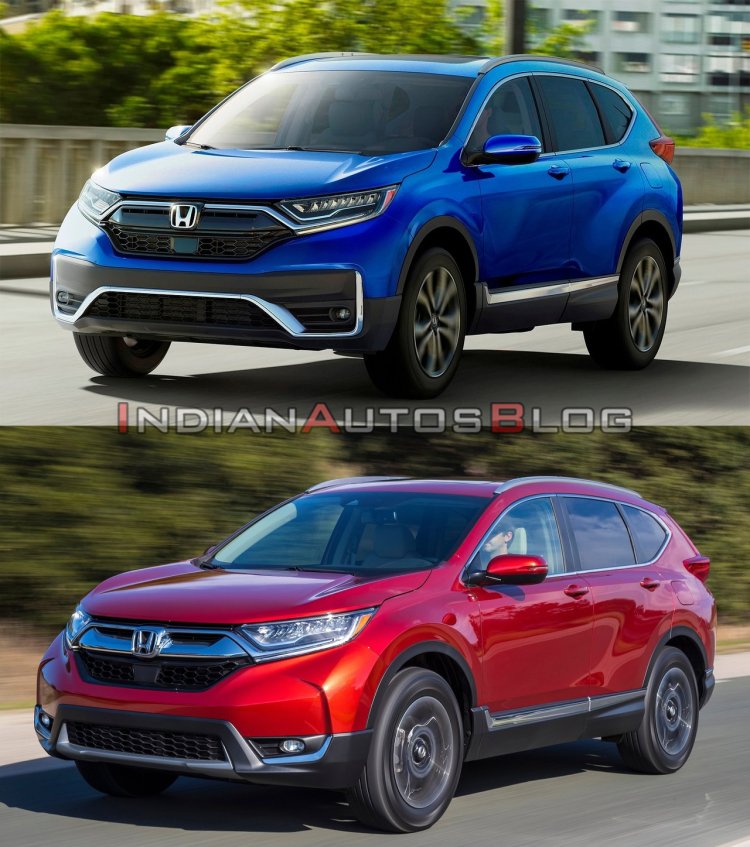The CR-V has been one of the most desirable products from Honda ever its introduction in 1995. The fact that it has been the best-selling crossover SUV in the American market for the past two decades is enough to prove its dominance in the international markets. The current-gen CR-V was introduced back in 2016, and being at the middle of its lifecycle now, it has received a facelift. In this story, we compare both the models side by side on paper and see what has changed and what remains the same.

In terms of looks, the facelifted Honda CR-V is barely any different from the pre-facelift model. The facelifted model features a more pronounced chrome grille, repositioned front fog lamps, revised bumpers, new alloy wheels in 18-inch and 19-inch sizes, tweaked tail lights with a dark tint, darkened chrome garnish below the back glass, which is more darkly tinted, and new chrome exhaust finishers. Specific to the Hybrid variant is a new, blue Honda logo at the front. All in all, it would be hard to tell the new model from the old one if not looking at minute details.
The interior has remained mostly unchanged, even more than the exterior. The biggest change here is the adoption of a push-button gear selector that gives a cleaner look to the centre console. Also, the centre console bin is a redesigned one. It's easier to use and offers more flexible storage options. The instrument panel, steering wheel, dashboard, AC vents and the infotainment system are in the same design as on the old model. The engine and transmission options have remained unchanged post the mid-life update. Honda mentions no changes for enhanced performance and driving dynamics either.

Also Read: Next-gen 2020 Honda City rear-quarter - IAB Rendering
The current Honda CR-V's prices range from INR 28.27 to 32.77 lakh (ex-showroom, Delhi). The facelifted Honda CR-V will pack upgraded, BS-VI engines, and so, it will be pricier. Production in Asia is yet to commence and one can expect the launch in India to take place in the second half of 2020.


















